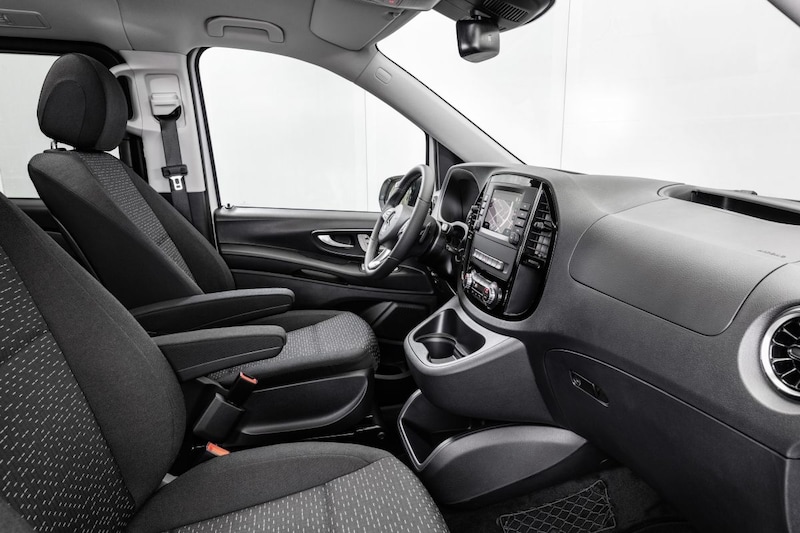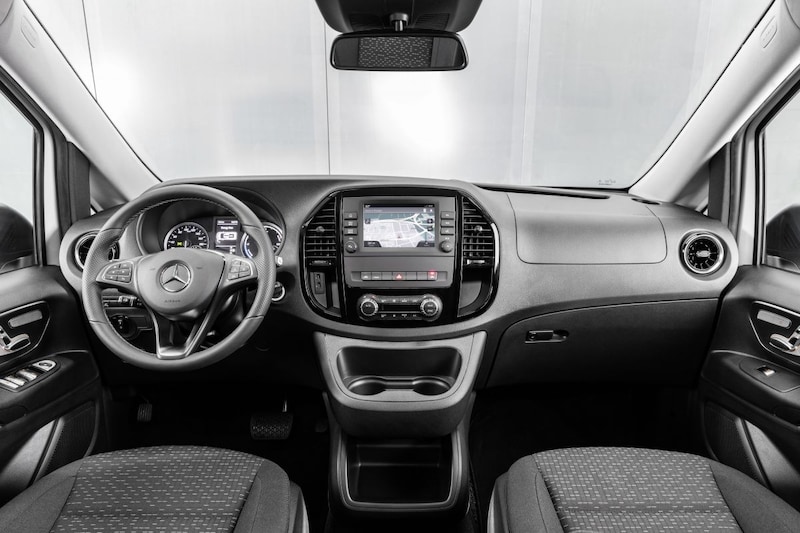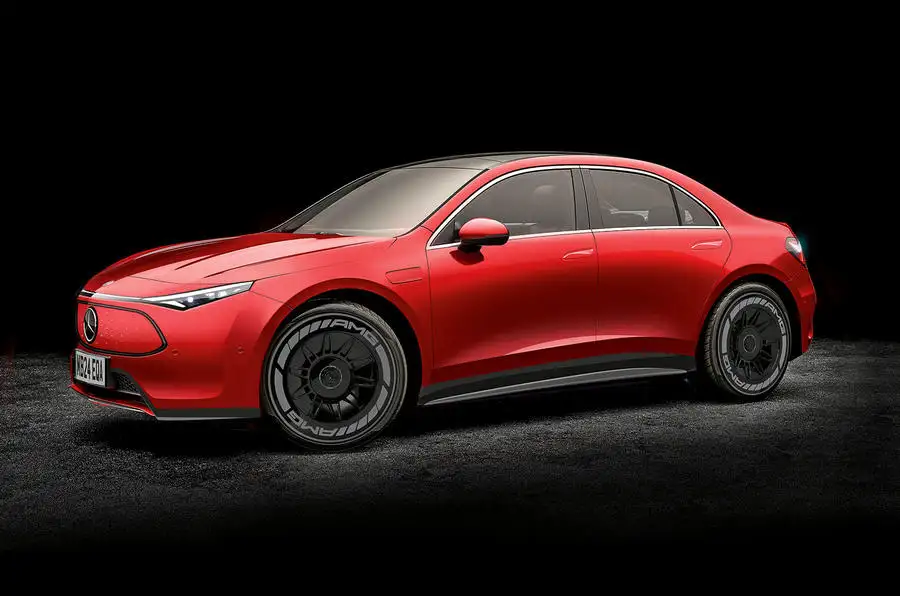MERCEDES-BENZ

MB Vito undergoes update
The biggest news about the refreshed Mercedes-Benz Vito is the arrival of an improved electric version. Where the existing eVito can drive a maximum of 150 kilometers per charge, the new eVito Tourer saves about 360 kilometers. Is it worth considering as a new bus, or is it better to stick to the (also modernized) diesels?
To start with those diesel engines: the Vito and the Vito Tourer (passenger transport versions) are now available with the same four-cylinder turbo diesel Mercedes-Benz supplies in its passenger cars. Compared to the previous engine, it runs quieter and with less vibration, emits considerably fewer pollutants and is available in more power versions. For automatic drivers, there is also good news: the nine-speed automatic gearbox – 9G-Tronic calls Mercedes – can now also be ordered.The Vito 114 CDI is the lightest diesel engine with a power of 136 hp (100 kilowatts) and 330 Newton meters of pulling power. In addition, there is a choice of the 116 CDI with 120 kW / 163 hp (380 Nm) and the 119 CDI with 190 hp / 140 kW and 440 Nm of torque. For the Vito Tourer, Mercedes-Benz also conjures up a new top version : as a 124 CDI, the diesel produces a maximum power of 176 kW / 239 hp and an impressive pulling power of 530 Newton meters. The Vito Tourer can accommodate up to nine occupants, but on request Mercedes can also convert the bus into a double cabin or a closed van.
360 kilometers electric
Equally interesting is the renewed eVito, which has become much more usable for many entrepreneurs than the existing model – which, incidentally, will remain available. That electric ‘basic version’ saves about 150 kilometers per charge (and then you have to drive on eggs) so it is mainly suitable for handymen and gardeners who are largely working in their own region. The stronger eVito Tourer gets more than double the number of kilometers from its battery pack of 90 kilowatt hours: according to the WLTP consumption measurement, about 360 kilometers are possible
In one fell swoop, these figures make the eVito Tourer more interesting for a larger group of entrepreneurs: from now on you can easily go back and forth to the job remotely, while taxi companies and transporters of school children, for example, do not have to wait at the charging station every now and then. With this type of numbers, the compromise of electric driving is significantly smaller and there is hardly any question of charging stress. The same applies to loading kilos: the Vito on diesel has a load capacity of 1,200 kilos, while the eVito can carry 1,005 kilos.
Greater EV power
The renewed eVito loads a lot faster than the previous version. You can only put it on a ‘standard’ charging station, after which the battery drips full with 7.4 kilowatts. With the large battery pack of the new version, it would take a working day before your batteries are full again, so Mercedes-Benz has placed a different charging port. It is no longer in the side of the bus but in the front bumper.
Charging on a standard pole is possible with 11 kW, but there is also a CCS connection that allows fast charging with a maximum of 110 kW. Then the tap opens fully and you can recharge 80 percent of the battery in about 45 minutes, if necessary.
Speaking of fast: the engine power of the eVito Tourer is also making a big leap. Where the existing version still has to do with 85 kW (or 114 hp), the electric motor in the improved version produces a maximum power of 150 kilowatts or 204 hp. You also notice that in the ease with which the electric order accelerates: the less powerful eVito zooms forward without much spectacle, this new one is occasionally very fast. Incidentally, the top speed is limited to 140 kilometers per hour, whoever wants it can be increased to 160 kilometers per hour for an additional charge.
To regain energy during the rollout, the eVito offers five so-called ‘recovery modes’. You select it with the paddles on the steering column and that is very user-friendly, while the car can also automatically choose the best position so that you use the energy unnoticed much more efficiently. The driving comfort is at a very high level, partly due to this type of system.

Workplace
Although Mercedes-Benz upgrades the standard (safety) equipment for the new model year, the innovations are not shocking. For example, the (e) Vito is now equipped with an emergency brake assistant and a lane assistance, while you can also opt for adaptive cruise control and even air suspension. We already know all such systems from competitors such as the Ford Transit and the Volkswagen Transporter, so the Vito does not immediately take the lead in this area. The same applies to the interior: the dashboard has been renewed with the arrival of round ‘turbine air vents’ and upgraded infotainment systems with 7-inch touch screens can be supplied.

The particularly pleasant MBUX control system, which you will find in the luxury EQV and other Mercedes-Benz models, is also not on the Vito. In itself it is a logical choice because the brand wants to keep these vans more affordable, but those modern facilities (optional if necessary) had taken the interior to a higher level. Now it is ‘just okay’: the layout is handy, there is more than enough storage space and you can use Apple Carplay and Android Auto, among others.
Another smart feature, by the way: the Vito is available with a digital interior mirror that shows the (camera) image behind the car while driving. Ideal and safe for when you are driving with a closed van.

Added value
Whether an electric van is a good investment for your company depends on more than the purchase price – which is not yet known for the new versions of the Vito. Overall, an e-version is much more expensive to purchase, but cheaper to use and maintain. As a result, the balance can quickly turn in favor of an electric bus.
In addition, entrepreneurs in certain industries can no longer ignore the ‘battery bus’: for example, tenders in some city centers already require that you drive emission-free, while more and more municipalities are planning to close their streets in the future for vans with a diesel engine.
Autonews

Nenhum comentário:
Postar um comentário